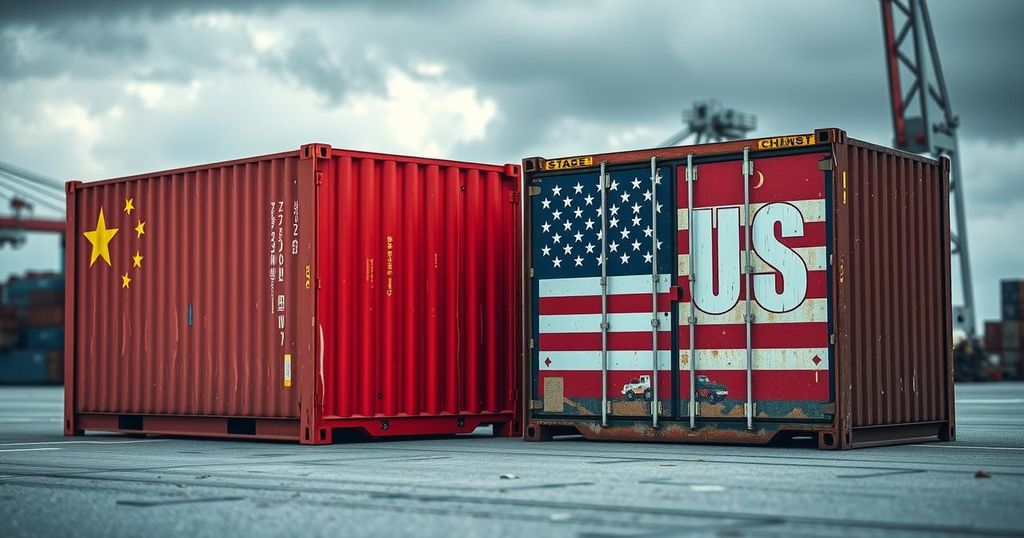China Increases Tariffs on U.S. Vehicles Amid Ongoing Trade Tensions
China has imposed a new 10% tariff on U.S. vehicles exceeding 2.5 liters in engine capacity, increasing total tariffs to 25%. This move primarily affects American auto manufacturers already struggling in China, while also impacting foreign brands like Mercedes-Benz. GM has initiated a premium vehicle service to retain market presence, yet the tariffs may undermine these efforts. Dialogue continues between U.S. and Chinese leaders to ease tensions.
From Monday, China has implemented an additional 10% tariff on U.S. vehicles with engines larger than 2.5 liters, raising the total duty to 25%. This development further complicates the ongoing trade negotiations between the United States and China, amid stalled discussions over broader tariffs imposed by the Trump administration on Chinese imports.
The large-engine vehicle exports from the United States to China, while not substantial compared to local production, totaled approximately $3.1 billion last year according to customs data. The new tariff particularly impacts major American manufacturers such as General Motors and Ford, which are already encountering difficulties in the Chinese market as consumers increasingly favor domestic electric vehicle manufacturers like BYD.
General Motors previously reported over $5 billion in losses associated with its operational challenges in China. Moreover, foreign automakers, such as German brands Mercedes-Benz and BMW, are also at risk, with projections indicating that Mercedes could experience a 1.5% decline in its earnings before interest and taxes (EBIT) in 2025 due to the new tariffs, according to Bloomberg Intelligence.
To retain its appeal among affluent Chinese consumers, General Motors launched the Durant Guild premium import service in 2022, featuring models like the GMC Yukon and Chevrolet Tahoe, which exceed three-liter engine capacities. However, the introduction of additional tariffs presents new challenges for this initiative.
Despite these recent developments, the trade situation remains dynamic. President Trump has expressed his intention to communicate with Chinese President Xi Jinping, while China’s Ministry of Foreign Affairs advocates for ongoing dialogue to avert escalation into a full-scale trade war.
In summary, China’s implementation of a new 10% tariff on larger U.S. vehicles further exacerbates trade tensions between the two nations. The tariffs pose significant challenges for both American and foreign automakers in the Chinese market. Continuous dialogue appears vital for mitigating the risk of a broader trade conflict as both nations seek to navigate their economic relationship.
Original Source: www.cbtnews.com








Post Comment